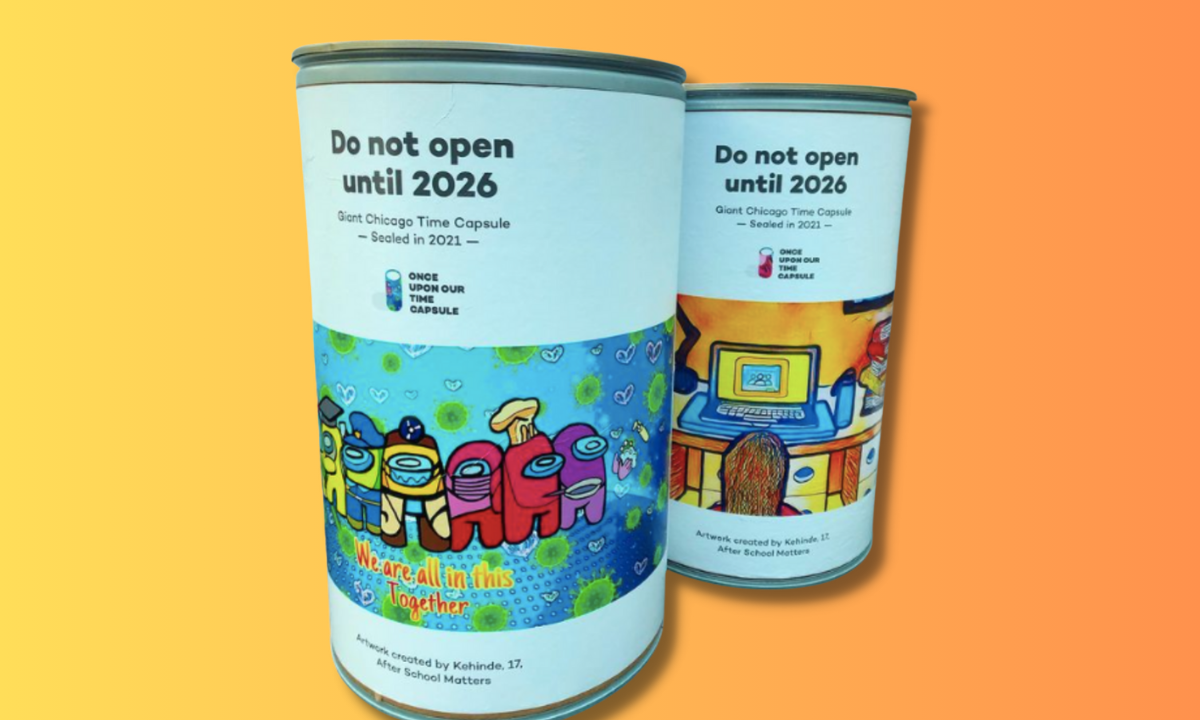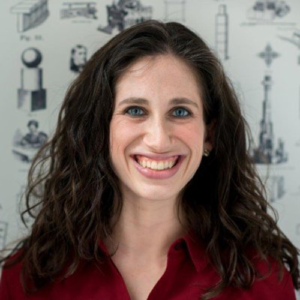How a Family COVID Project Became a Fun, Creative Outlet for Children Nationwide
Gillett: We began with time capsules placed around Chicago, to be opened in 2026. Now, kids around the U.S. — and social media — are making their own.

Get stories like this delivered straight to your inbox. Sign up for The 74 Newsletter
The vibe in education these days is dark. Test scores are falling, students’ mental health needs are growing and educators are becoming more and more exasperated.
Perhaps schools should focus on fun.
This isn’t a fanciful wish that’s out of touch with the stark challenges facing many communities. Rather, it’s a strategy, a means to an end, a practical way to help students — especially those who are most disconnected from school — re-engage with learning and mitigate some of the harmful effects of the pandemic.
COVID-19 took bad problems and made them worse. Even before the pandemic struck in March 2020, only 32% of 11th-graders said they felt engaged in school and some 8 million students were absent for 10% or more of the academic year.
Then, COVID hit, and students were stuck at home, learning from screens.
As a mom, I wasn’t familiar with all the developmentally appropriate material for my three children, who were then 2, 4 and 6 years old. But I knew it was critical for them to keep growing, academically, socially and emotionally. I had read so much about the importance of a child’s first five years, and here I was, like many other parents, trying to figure out how to help them learn and keep us all sane. Partly as a way to avoid doomscrolling, I started spending my nights planning “trips” we would take around the world and back in time.
Each week, we chose a place to “visit” from our home. On our trip to Peru, we turned dozens of grocery boxes into Machu Picchu. The next weekend, we traveled back to the Jurassic period, turning those boxes into a massive dinosaur in our backyard. We went to the “Wild West” and slept in a tent in our backyard; traveled to “Greece,” where we competed in our own Olympics; and visited the “Sahara Desert” in “Morocco” (more commonly known as nearby Indiana Dunes National Park).
My most basic aim was to stave off boredom (for my children and for me). My more ambitious goal was to not just keep my kids learning, but to help nurture the flame — so bright early in life — of children’s natural curiosity.
Eventually, I told another mom about my family’s simulated trips, and the two of us started brainstorming whether there was another mechanism that could engage children all across my hometown of Chicago in learning in a fun and experiential way — but be more convenient than working with dozens of grocery store boxes. We wanted all students to have access, whether from well-to-do zip codes or neighborhoods beset by high poverty rates.
We landed on time capsules, where kids could contribute their stories of living through the pandemic. Within a few months, my mom-friend and I found a financial sponsor and enlisted the partnership of City Hall, schools, summer camps, after-school programs, public libraries, children’s hospitals, museums and other organizations. With the generous support of philanthropic and corporate partners offering pro bono services, we built a website, developed a curriculum and distributed materials all across the city. Our partner organizations helped children gather objects, write letters to kids of the future and illustrate the good and the hard moments, all while sharing what they were learning about themselves and their communities. They then submitted their materials into a time capsule — a simple cardboard mailing tube. We collected those mailing tubes and placed them in huge barrels at cultural sites around the city, like the Chicago Public Library. They won’t be opened until 2026.
We focused primarily on ages 9 to 14, the developmental stage when kids are becoming more independent, beginning to see the point of others more clearly and encountering a range of significant — and often challenging — emotional and social changes.
The act of developing a story, sharing it and learning about peers’ experiences provided a fun and very important opportunity. At in-person events and through our partner organizations, kids told us the activity helped them feel like they mattered. Engaging with peers made them feel less burdened and more connected to themselves and to one another.
Over time, we realized that using time capsules as a way to access students’ feelings and experiences, and to help them learn about the perspectives of others, had benefits that extended well beyond the pandemic. We founded a nonprofit, Once Upon Our Time Capsule, that today guides children across the country in making time capsules of their own, as a way to recognize and honor what they, and others, value.
Students creating physical time capsules practice their writing and storytelling skills, learn about history and culture, use the arts to express themselves, develop critical thinking skills and connect with others. They can also use their video and social media skills to upload and add to our digital time capsule, which allows children from across the country to participate and share their stories in their own voices. But this isn’t just about time capsules. It’s about finding ways to engage kids in learning, to make it fun to read and write, to build children’s sense of self and their sense of belonging by focusing on sharing what really matters to them and their peers: their goals, their community traditions and values, and their views on the world.
Too often, I look at what children are assigned at school and I think of the late, great British educator Sir Ken Robinson and his TED Talk warning that “we are educating people out of their creative capacities.” This is not a knock on teachers — they’re doing the best they can with what they have. Rather, it is an encouragement to administrators and policymakers to let students have fun.
Ultimately, children need to feel connected to school, to one another and to themselves. When kids feel linked to and accepted by others, they experience better physical and mental well-being — and when those feelings occur at school, they perform better academically. The pandemic severed feelings of connectedness. Now, it’s the job of schools to rebuild these bonds and focus on fun to unlock learning.
Get stories like these delivered straight to your inbox. Sign up for The 74 Newsletter

;)
